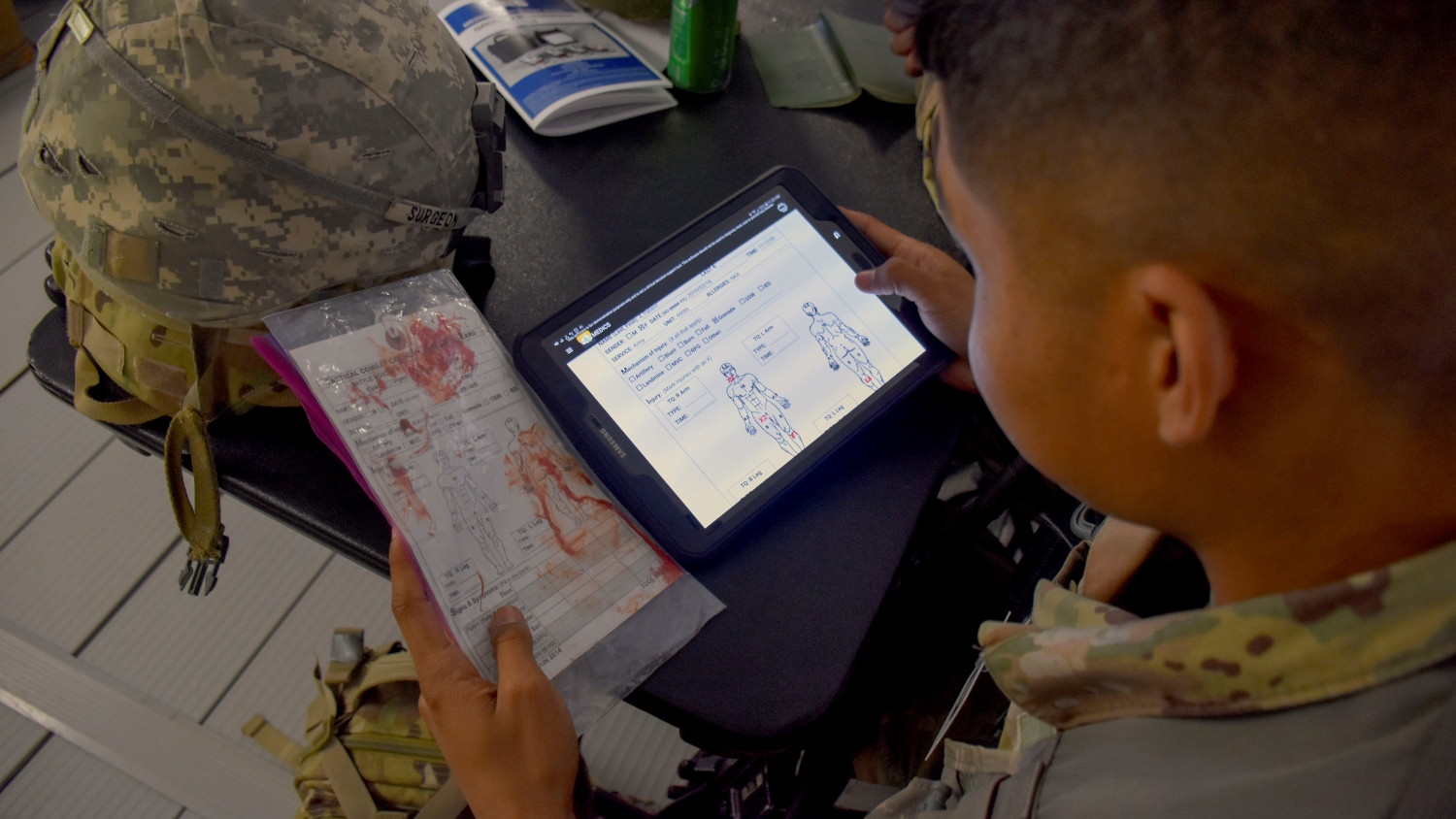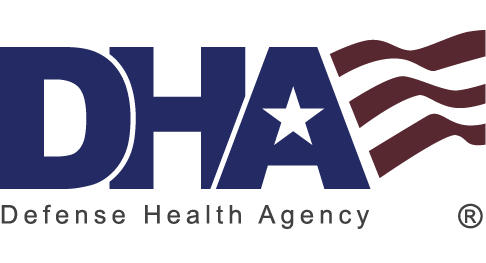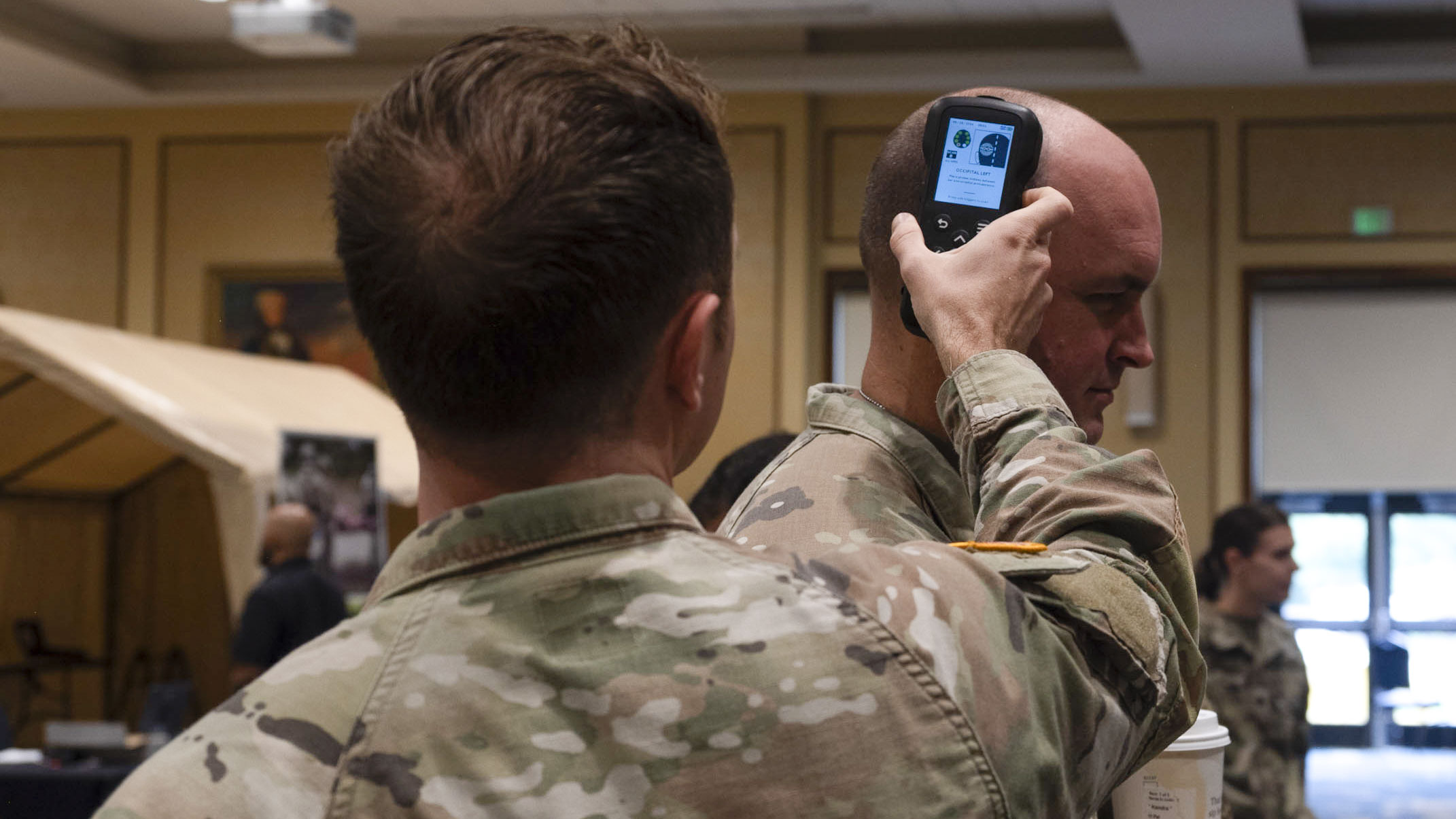Brain Health - Assessment and Prevention Programs
Capability
The ATBI is a fast, objective, U.S. Food and Drug Administration-approved tool to assess service members for TBI biomarkers using only a few drops of blood. Results are obtained in about 15 minutes. Negative results allow providers to rule out the need for a CT scan and reduce the number of unnecessary evacuations.
Impact
The ATBI will inform evacuation decisions at Role 2 and 3 locations within the deployed environment, enabling strategic use of potentially limited evacuation assets in Large Scale Combat Operations. The ATBI Whole Blood Assay achieved US FDA approval in March 2024, achieved milestone C approval in October 2024, and is in the process of being fielded to Army units. First Unit Equipped is anticipated before the end of CY 2025.
Capability
TBI FAP is an FDA-approved, noninvasive TBI assessment and monitoring capability designed for the combat medic. It will enable rapid and objective triage, treatment, and evacuation decisions by detecting brain hemorrhage and swelling throughout the entire cranial vault. This “set and forget” device will serve as a medical force multiplier in large scale combat operations, allowing medics to monitor casualties and perform other life-saving procedures without requiring direct attention.
Impact
TBI FAP will enhance and inform casualty management decision-making in prolonged care, to include triage, evacuation, treatment, and the necessity for damage control neurosurgery. It will enhance medic capabilities and capacity, especially in mass-casualty scenarios, by providing automation and enabling monitoring of multiple TBI casualties via a smartphone platform like NettWarrior. TBI FAP will inform evacuation decisions, promoting readiness and combat power while saving the lives of service members.
Capability
Non-helmet, wearable medical devices are intended to prevent or reduce the risk of Traumatic Brain Injury during potentially concussive events including impact, occupational exposures, and blast overpressure from artillery, missiles, weapon systems, and improvised explosive devices.
Impact
Preventing or reducing the risk of TBI in military operational and training environments will sustain warfighter readiness and expedite return to duty. Current efforts are focused on assessment and evaluation of the Q-Collar (manufactured by Q30 Innovations, Inc.), to include preclinical studies; fit, tolerability, and field suitability testing; and environmental and mechanical bench testing to assess Q-Collar durability in extreme conditions.
Capability
The OBHAT program will deliver FDA-approved objective screening and diagnostic tools to enable rapid identification and triaging of behavioral health conditions in service members throughout the continuum of care.
Impact
Behavioral health issues are a leading cause of field evacuations, but medical units currently lack the ability to provide remote behavioral health diagnosis far forward and during early entry operations. Current methods rely on time-intensive and subjective surveys administered by qualified providers, overburdening clinics and Combat and Operational Stress Control units due to the volume of service members seeking help. OBHAT will provide an easy to use, objective device to enable assessment by medics and non-behavioral health providers.
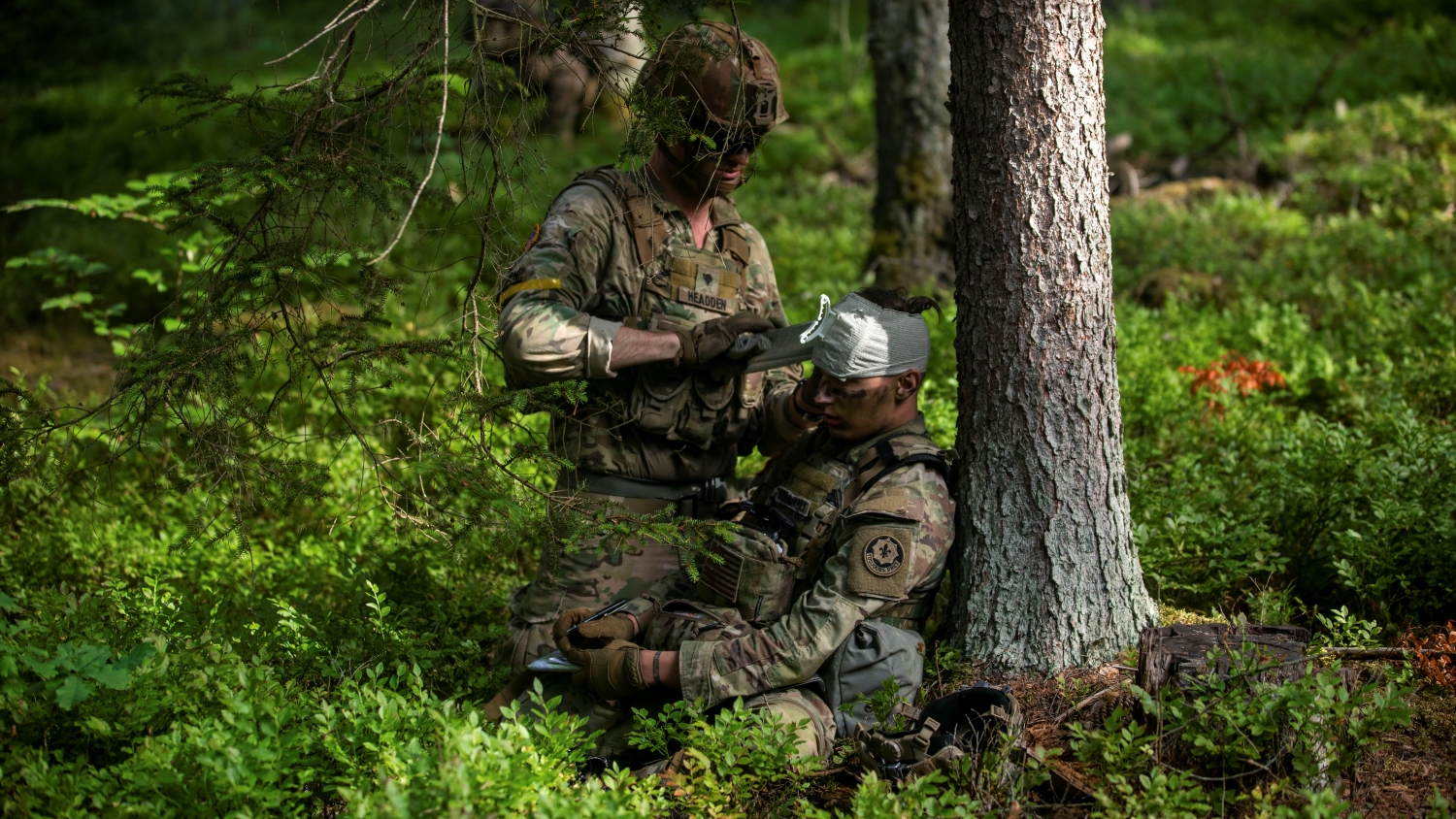
Brain Health - Drug Treatment Programs
Capability
The TBI-DT program will deliver oral, intravenous, and/or intramuscular drug treatments for the acute management and treatment of TBI far forward in combat theater and throughout all roles of care, enhancing the recovery of injured warfighters. This program is currently enrolling volunteers for a multi-site, adaptive platform clinical trial.
Impact
TBI is a leading cause of casualties in service members and has been shown to increase long-term morbidity and reduce life expectancy. FDA-approved TBI drug treatments will save lives, minimize secondary injury, mitigate long-term care costs, reduce medical evacuations, and accelerate recovery and return to duty, enabling mission readiness and lethality.
Capability
The PTSD-DT program will deliver Food and Drug Administration-approved new drugs indicated for the treatment of PTSD, and/or improved Level-of-Evidence knowledge to inform clinician decisions for off-label use of FDA-approved drugs.
Impact
Military veterans are more likely to have PTSD than civilians, and service members who deployed to a war zone are more likely to have PTSD than those who did not deploy. People with PTSD have difficulty recovering after experiencing or witnessing a traumatic event. The condition may last months or years, with triggers that can bring back memories of the event, accompanied by intense emotional and physical reactions.
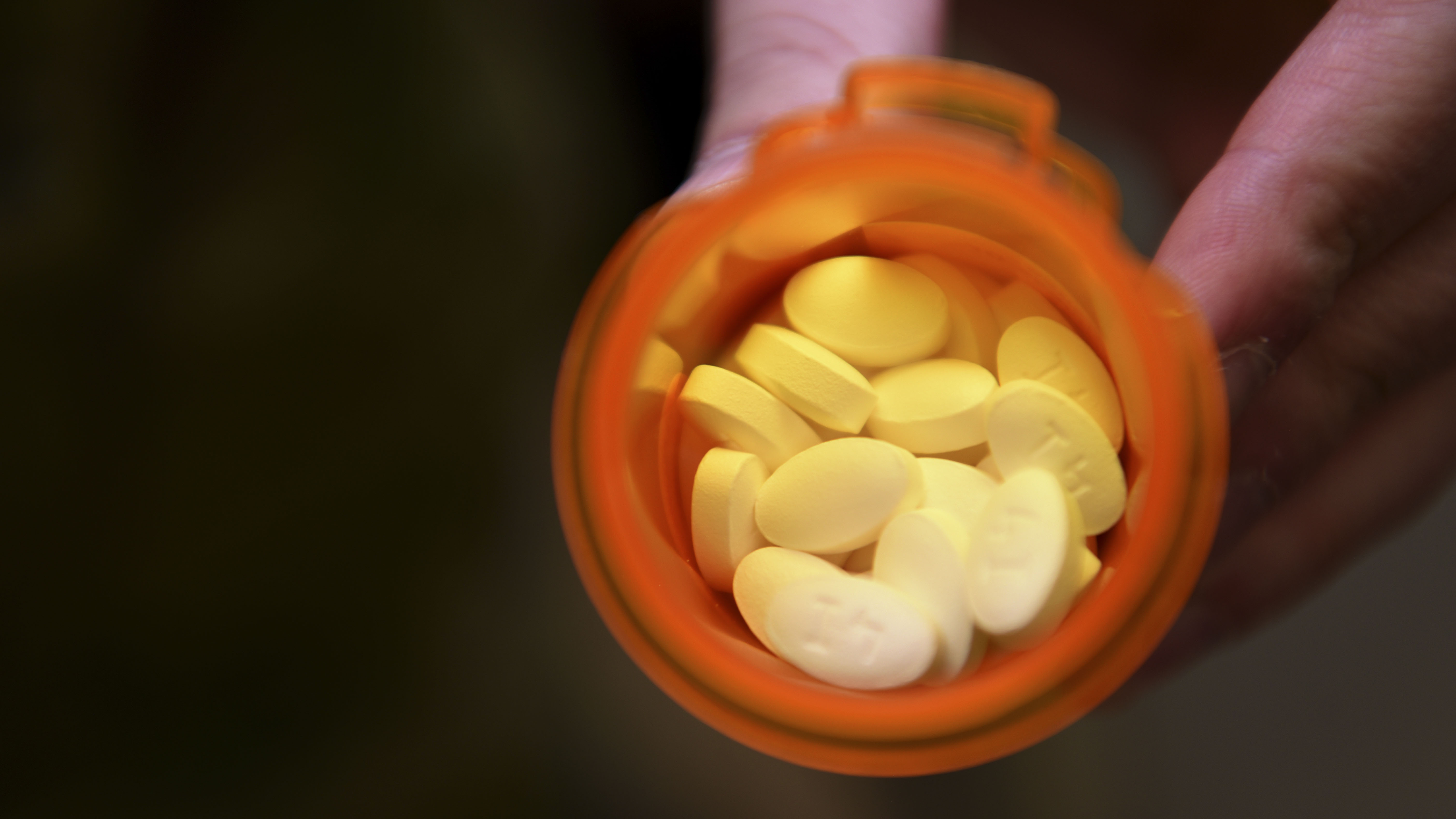
Readiness and Performance Programs
Capability
The CTMM program performs continuous real-time monitoring
of a canine's operational environment and vital signs, enhancing the operational
effectiveness of Military Working Dog healthcare.
Impact
Hyperthermia and heatstroke are the leading cause of accidental
death overall in MWDs, the second leading cause of non-hostile action death in
Military Police K9s, and the third leading cause of death in MWDs in combat
zones. The CTMM program provides veterinarians and leaders with actionable
information to reduce preventable heat injuries and optimize performance of
MWDs.
The CTMM sensor automates the collection health data during MWD training and operational exercises and provides a store and forward capability in a Disconnected Intermittent Limited (DIL) or Disrupted, Disconnected, Intermittent, and Low Bandwidth (DDIL) environment.
Capability
JHRM receives, assesses, and aggregates tactical blast
and other operational and environmental medical information, disseminates the
data through existing command and control systems such as Joint Battle
Command–Platform, enables storage of data in the longitudinal database, and
provides a Common Operating Picture/Commander’s dashboard to enable command and
control decision making. JHRM will utilize the software pathway and deliver the
first spiral of capability in FY 26.
Impact
Existing capabilities do not assist warfighters,
commanders, or medical providers at the tactical edge with determining level of
exposure and risk to mission readiness. JHRM will provide this capability,
allowing leaders to make tactical command and control decisions, increase
readiness, and enable lethality and mission success.
